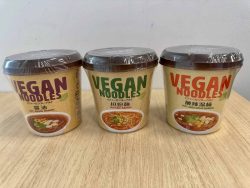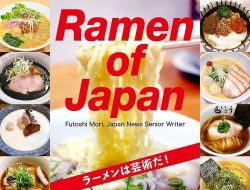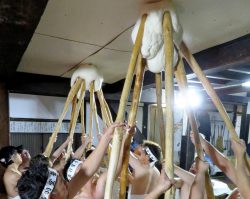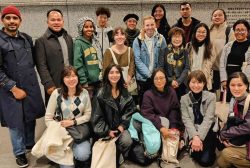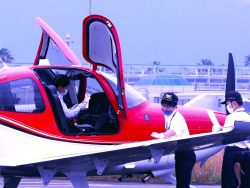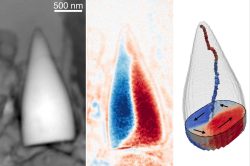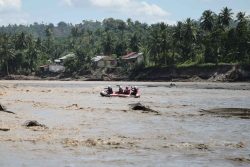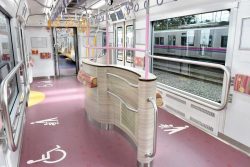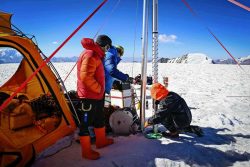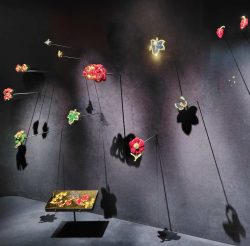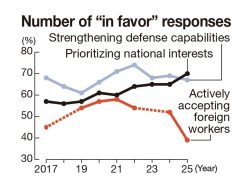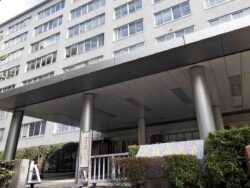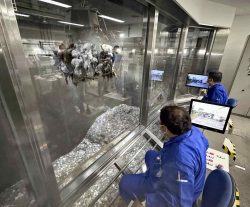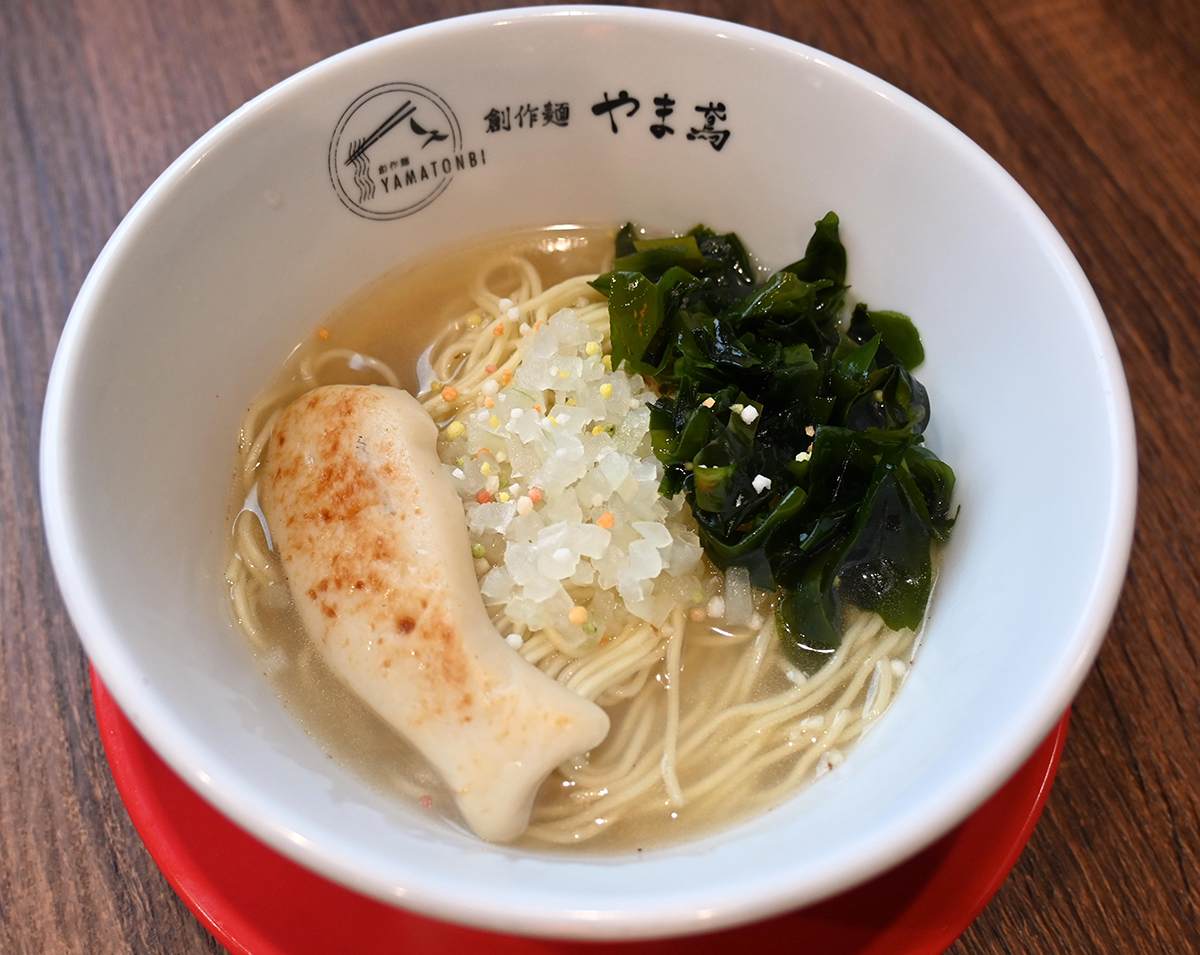
“Iwaki sunshine ramen” (¥980), filled with the bounty of Iwaki
13:57 JST, April 20, 2023
Delicious fish. A hot spring with centuries of history. Abundant sunshine. Iwaki City in Fukushima Prefecture is full of such delights. The city was hit hard by the Great East Japan Earthquake and the pandemic, but tourists are finally starting to return. And when they come, some might head to the city’s Onahama district for a bowl of Yamatonbi’s “Iwaki sunshine ramen” (¥980), a local ramen dish filled with the bounty of the Iwaki area. The young proprietor and his wife are as cheerful as the sunshine that bathes Iwaki, and they are passionate in their commitment to their hometown’s recovery.
I boarded the Hitachi limited express train on the Joban Line from Tokyo Station and alighted at Izumi Station. The famous Spa Resort Hawaiians is one stop further, a short trip toward the mountains from Yumoto Station. However, my destination was by the ocean, about a 15-minute taxi ride from Izumi Station. Yamatonbi is a very beautiful, newly built, two-story shop and residence with red nobori banners reading “Ramen” and a brighter red chochin lantern hanging at the entrance. In one corner of the property stands a small shrine that mourns broken renge ramen spoons. A plaque explains that money donated here is used to run a children’s cafeteria that provides free or low-cost meals and a friendly environment for children in the area.
-
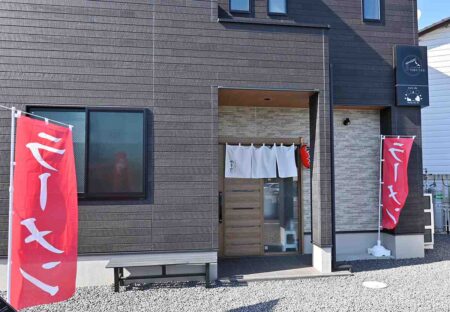
The exterior of Yamatonbi
-
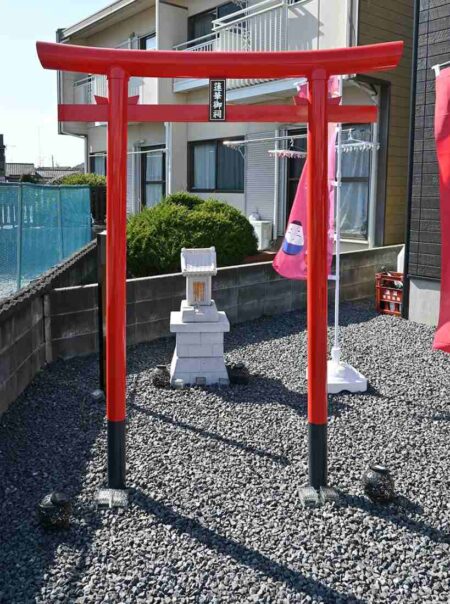
A shrine on the premises to mourn broken renge ramen spoons
-
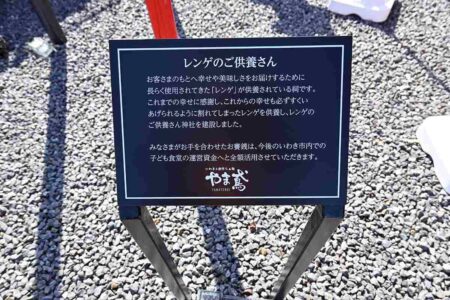
A plaque explaining the shrine
-

A white noren curtain hangs over the shop entrance
-
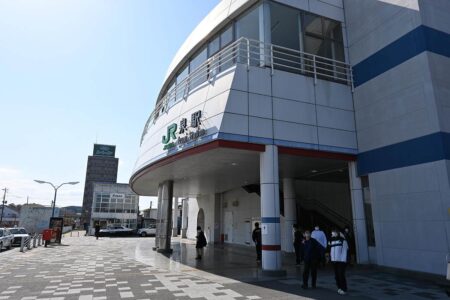
JR Izumi station, Iwaki City
The shop’s owner, Shuta Magariyama, 39, and the okami proprietress, Mami Magariyama, 28, dressed in a kimono, greeted me cheerfully with a “Welcome!” The seating area and kitchen are spacious. After I purchased “Iwaki sunshine ramen” from the ticket machine at the entrance, Shuta immediately set to work.
“The soup is made from an underutilized fish called kanagashira,” Mami told me, bringing me a tray of the fish. It was reddish and resembled the high-end sea robin. Mami continued, “Because the head and bones are so hard, it is called kanagashira [gold head]. It’s caught throughout the year, but there is not much to eat on it and it’s difficult to cook, so it used to be discarded. But in fact, it tastes great, like sea robin. Three years ago, we collaborated with Iwaki City to create a local ramen using such underutilized fish.”
-
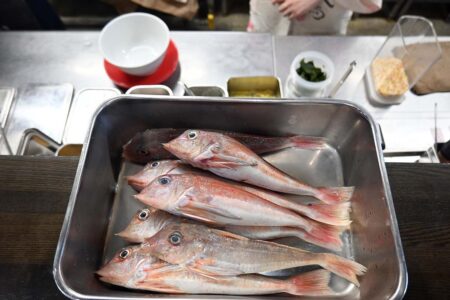
Kanagashira, bought at auction at the local fishing port. The fish used to be little used, but supermarkets have recently begun selling it.
-
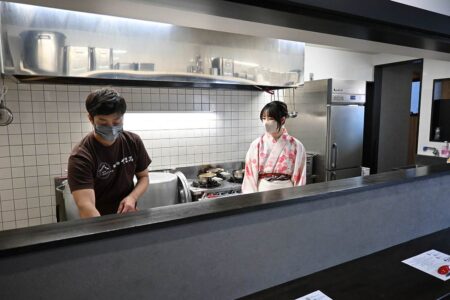
Shuta and Mami begin making ramen. Mami always wears a kimono at the shop.
-
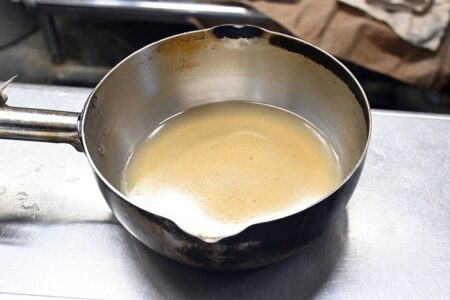
Ramen soup made from kanagashira fish
-

Shuta pours soup that has been heated up into a bowl.
The finished ramen was served in front of me in a white bowl with a red saucer, giving it a festive look. The small colorful arare (rice crackers) sprinkled on top of the ramen further added to the cheery ambiance. I took a sip, and the soup was superb. It has a clear, fresh taste with a rich umami flavor, and there is no trace of fishy smell. It was like a bouillabaisse. But it’s hardly any wonder once you hear the reason.
“We have a license to bid on fish at the Iwaki Fishing Port Auction,” Shuta said. “And immediately after securing fish at auction, I clean them up with salt and water and make soup in a large zundo pot. I almost exclusively use kanagashira.” There’s no beating fresh fish. Fish caught off the coast of Fukushima are known as “Joban-mono,” a brand of fish that is known for its freshness. According to Shuta, one serving of soup makes use of two kanagashira. The soup is divided up between small bags and frozen for individual servings, then heated and served when the ramen is ordered.
-

Serving up the toppings is Mami’s job.
-

Thin noodles made with hot spring water from Iwaki Yumoto Onsen
-
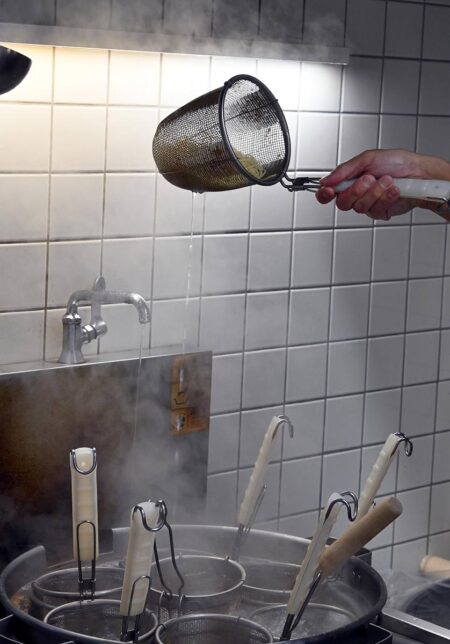
The noodles are ready.
-
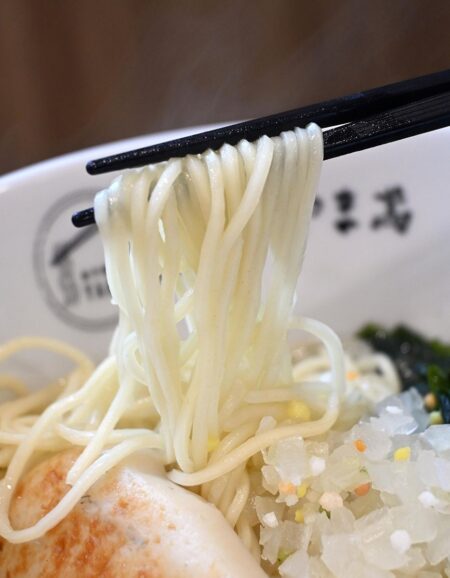
Beautiful, white, thin noodles
The soup is not the only thing they are particular about. The noodles are custom-made by a local noodle producer using hot spring water from the Iwaki Yumoto Onsen. The water is said to give the noodles a more expansive feel. And certainly, the thin, white noodles are none too shabby, with a wonderful glutinous texture. Toppings include local fish, a greeneye-shaped fish cake, wakame seaweed, chopped onions, and arare crackers for color. White soy sauce is used as the kaeshi sauce for this ramen, and white forms the basis of the overall color scheme. Combined with the red and white of the bowls, the dish looked splendid and bright, and the flavor was luxurious.
-

Standard ramen (¥870), with which you can enjoy three separate umami flavors as the temperature of the soup changes
-
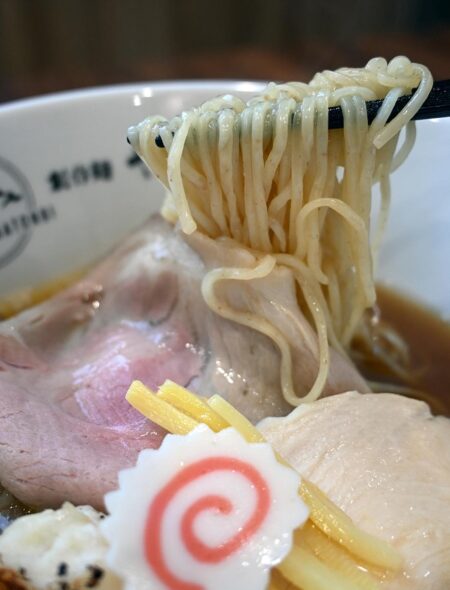
Thin noodles with whole wheat flour are used for the standard ramen and are topped with a beautiful naruto fish cake produced by a local company.
I also ordered another dish of interest, the standard ramen (¥870). The soup is made with homemade niboshi (dried fish) and a unique blend of soy sauce from three breweries in the cities of Iwaki, Shirakawa and Fukushima in Fukushima Prefecture. As you eat the noodles, the temperature of the soup changes, revealing first an umami of chicken, then clams and finally niboshi. Added to this is the umami of kombu seaweed and shiitake mushrooms. Toppings include two kinds of homemade braised pork and chicken chashu, as well as picture-perfect naruto fish cake. The naruto, produced by a local company, is used in cup noodles and accounts for a massive share of the national market.
Promoting Iwaki’s charms
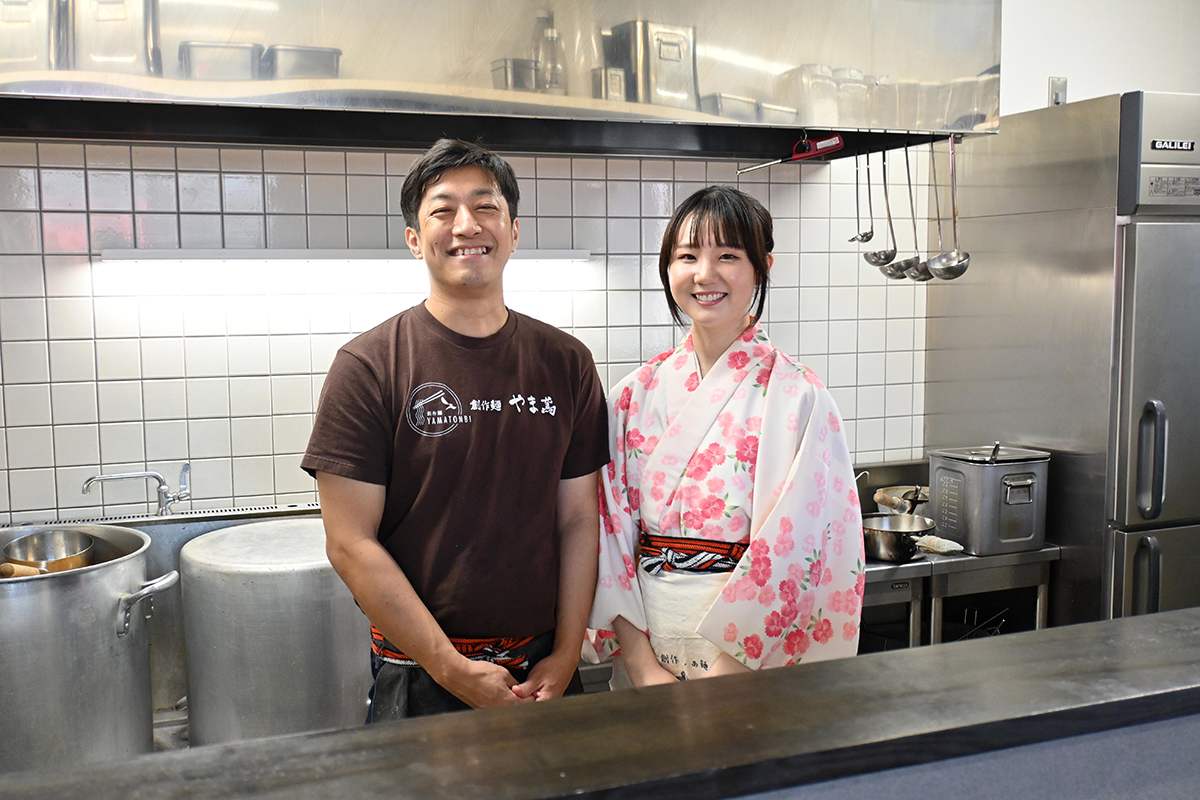
Shuta and Mami are passionate about the Iwaki’s rebuilding. Mami also works as a model.
In Fukushima, Kitakata and Shirakawa are famous for their ramen. Since 2017, when the Magariyamas started their ramen shop in Iwaki, the couple had been thinking about creating a local ramen, and in 2019 they launched a project in collaboration with the city of Iwaki to create one. The city’s condition was that underutilized fish and the Yumoto Onsen be used to promote the city. After much trial and error, the Magariyamas came up with a kanagashira broth and noodles made using the hot spring water, which they began offering the following year. At first, they served just the noodles and soup, but customers and children who visited the shop filled out request cards, which led to the current toppings.
-
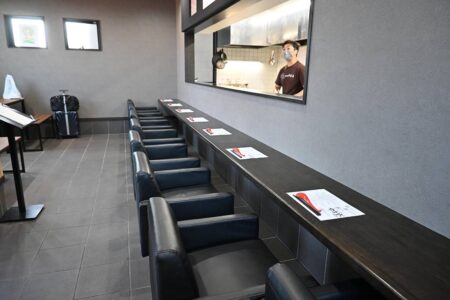
The spacious shop interior
-
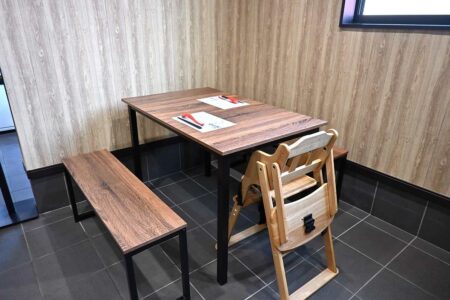
One of the two tables in the shop
-
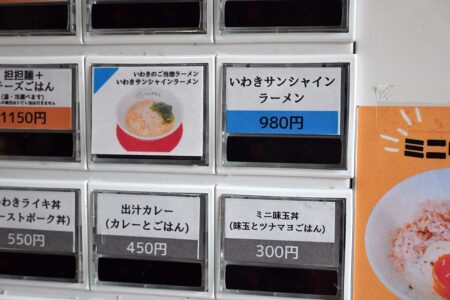
A ticket machine button with a picture of “Iwaki sunshine ramen”
-
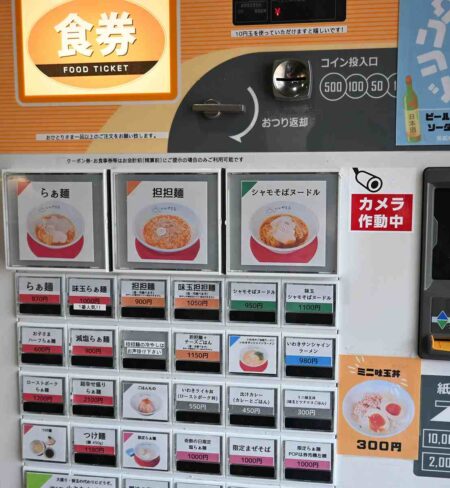
A meal ticket vending machine
Both Shuta and Mami are from Iwaki. Shuta studied at a university in Tokyo and after graduating went straight to work for a midsize construction company. However, the company’s scope was in fact quite broad, and Shuta was assigned to its food and beverage department, where he worked on the company’s related businesses. It was during this time that the Great East Japan Earthquake struck in 2011. Shuta felt a strong desire to aid in the reconstruction of his hometown, so he quit the company and returned in 2016, intending to start his own restaurant. Although he had little experience with ramen, Shuta says, “I was what is called a raota [ramen otaku]. I ate at a lot of ramen shops, so I had my own favorite flavors.” A ramen shop was the ideal way for him to put to work his love of ramen and the restaurant management experience he had gained while working for the company.
Mami, on the other hand, was a high school student at the time of the earthquake, and though she afterward went to study in Tokyo, she too eventually returned to her hometown. “I wanted to help out with the rebuilding of Iwaki,” she explained. She became a tourism ambassador for the city and carried out PR at various locations. She also works as a model and belongs to the agency that produces the magazine “Fukushima Bishojo Zukan” (“Beautiful Girl Pictorial Book”), in which young women in Fukushima become faces of the recovery effort through their upbeat and energetic messages. Mami and Shuta met in their hometown and opened a ramen shop in the city in 2017, around the same time they got married.
However, Mami recalls, “I was never good with restaurant work, and even when I was a tourism ambassador, I refused to work in this area. I couldn’t even use a kitchen knife by myself.” But after getting married, Mami decided to give it a try. Now she goes to fish auctions by herself decked out in rubber boots, and brings home tens of kilograms of fish with aching muscles. The couple has been working hard together to run their ramen shop, and in December 2021, they moved into their current location in a brand new building.
-

The official “Hula City Iwaki” logo is displayed in the shop as a sign of support for the city.
-
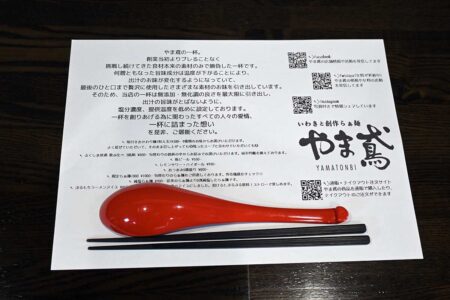
A paper place mat describing the shop’s approach to ramen
-
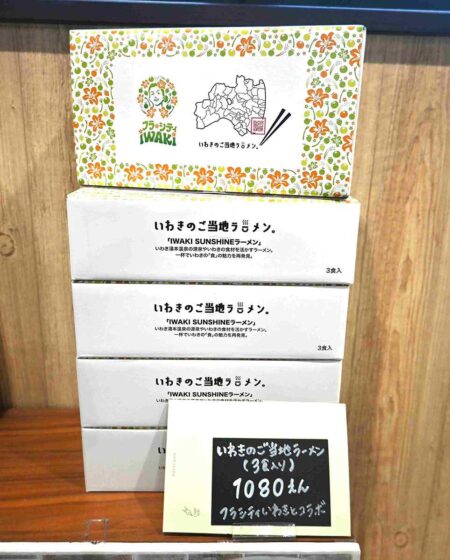
“Iwaki sunshine ramen” is also available online.
Mami says that kanagashira, which had been very cheap when they first started, has recently started to be sold in supermarkets and the price has gone up. “There are days when I get outbid and am unable to buy it,” she added. However, she accepts this as a good thing, as it proves that the value of the fish has increased, and it is now seen as an edible rather than thrown away. “Kanagashira can be caught all over in Japan, so I want more and more people to know and eat it, and I also want people to know about our Iwaki sunshine ramen,” says Mami.
The shop name Yamatonbi combines the character “yama,” meaning mountain, from the couple’s family name and “tonbi,” meaning black kite — a type of bird common to Iwaki. “Tonbi are birds that can stay airborne for a long time. We would like to keep our shop going and help carry the recovery of the local community for a long time, as if we, too, were gliding through the air,” Shuta says.
There are concerns in the local community now about reputational damage that could come from the release of treated water from the Fukushima No.1 nuclear power plant. “No matter what happens, we will continue to use ingredients from Iwaki and support the area’s rebuilding,” Shuta said resolutely.
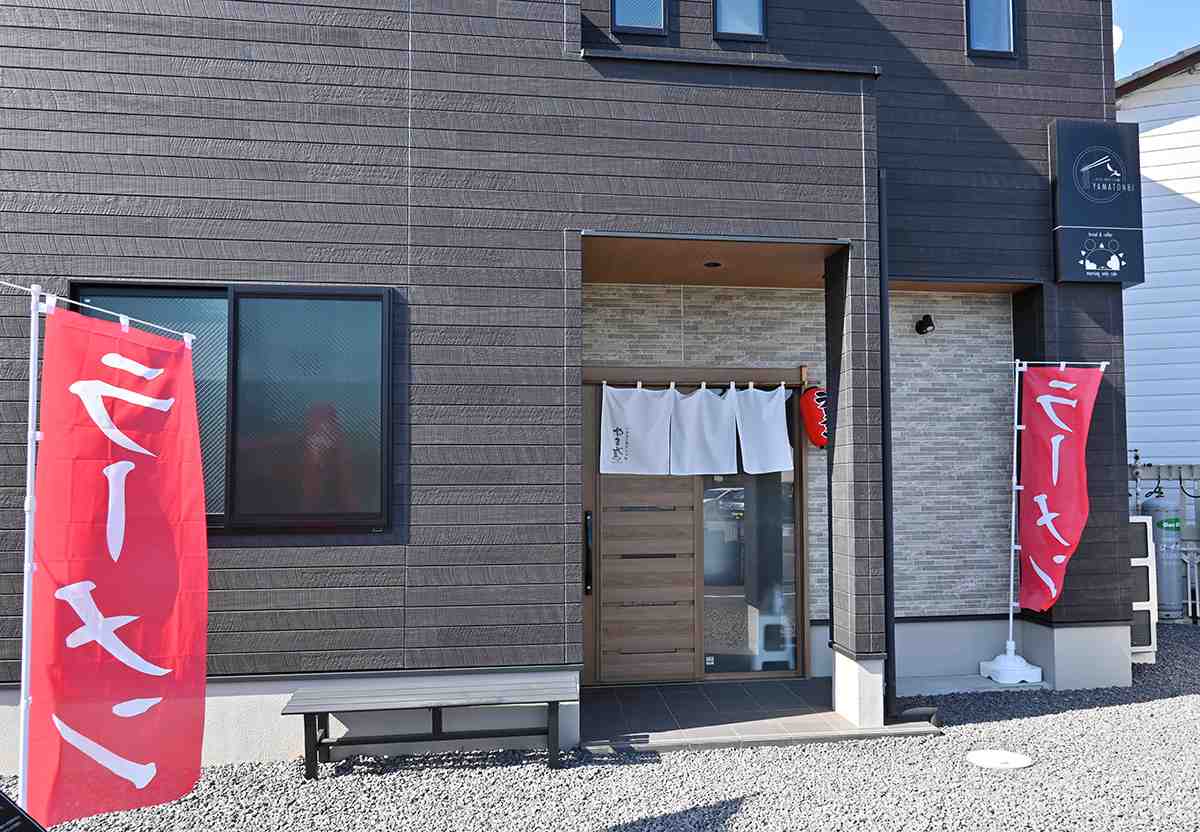
Yamatonbi
47-8 Onahama-Hanabatake-Cho, Iwaki City, Fukushima Prefecture. Open from 10:00 a.m. straight through to 8:00 p.m. Closed on Tuesdays. Information about the shop is available on Instagram.
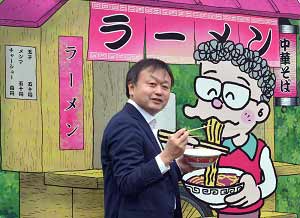
Futoshi Mori, Japan News Senior Writer
Food is a passion. It’s a serious battle for both the cook and the diner. There are many ramen restaurants in Japan that have a tremendous passion for ramen and I’d like to introduce to you some of these passionate establishments, making the best of my experience of enjoying cuisine from both Japan and around the world.
Japanese version
【ラーメンは芸術だ!】福島・小名浜の「やま鳶」、常磐もののうまみ詰まった「サンシャインラーメン」

"JN Specialities" POPULAR ARTICLE
-
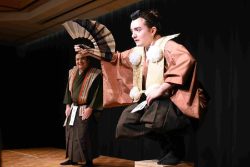
English-language Kabuki, Kyogen Entertain Audiences in Tokyo; Portland State University Professor Emeritus, Graduates Perform
-
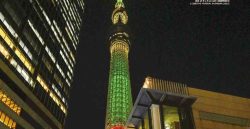
The Japan News / Weekly Edition (11/14-11/20)
-
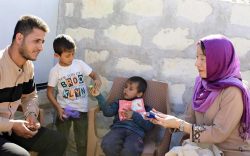
Yomiuri International Cooperation Prize: Prize fosters future generations of professionals
-

Tokyo’s Biggest Exhibit on Donald Keene Set to Open Saturday at Setagaya Literary Museum; Many Pieces to Be Displayed for 1st Time
-

Noodle Dining Shunsai / Rich Oyster Ramen to Savor at Odasaga; Experienced 68-year-old Owner Creates Numerous Ramen Varieties
JN ACCESS RANKING
-
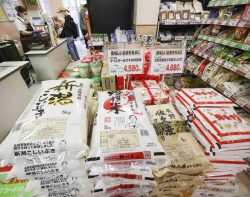
Govt Plans to Urge Municipalities to Help Residents Cope with Rising Prices
-
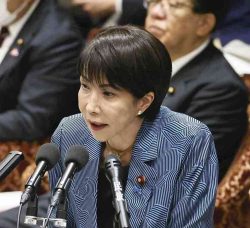
Japan Prime Minister Takaichi Vows to Have Country Exit Deflation, Closely Monitor Economic Indicators
-

Japan to Charge Foreigners More for Residence Permits, Looking to Align with Western Countries
-
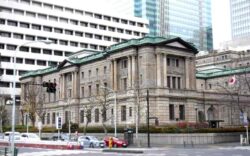
Japan GDP Down Annualized 1.8% in July-Sept.
-
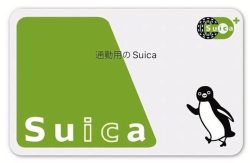
JR East Suica’s Penguin to Retire at End of FY2026; Baton to be Passed to New Character



